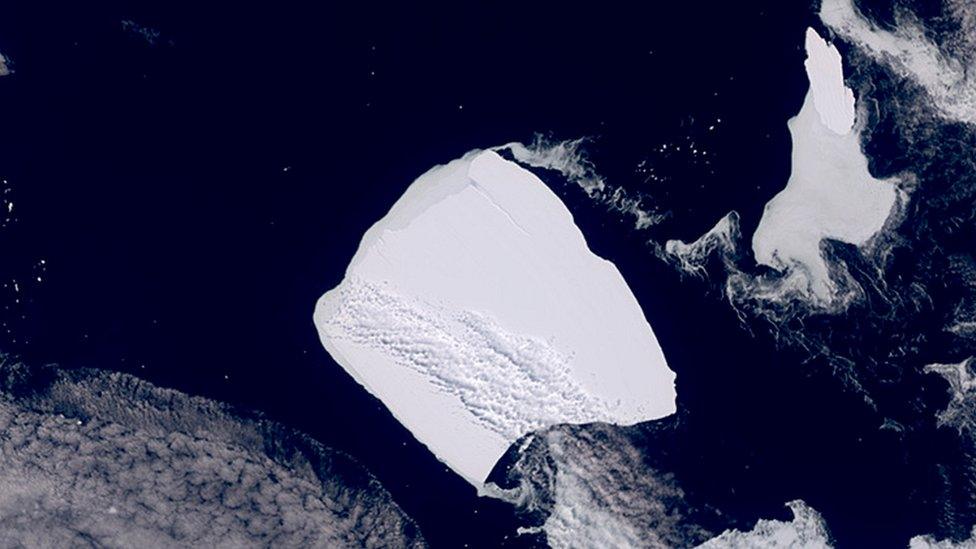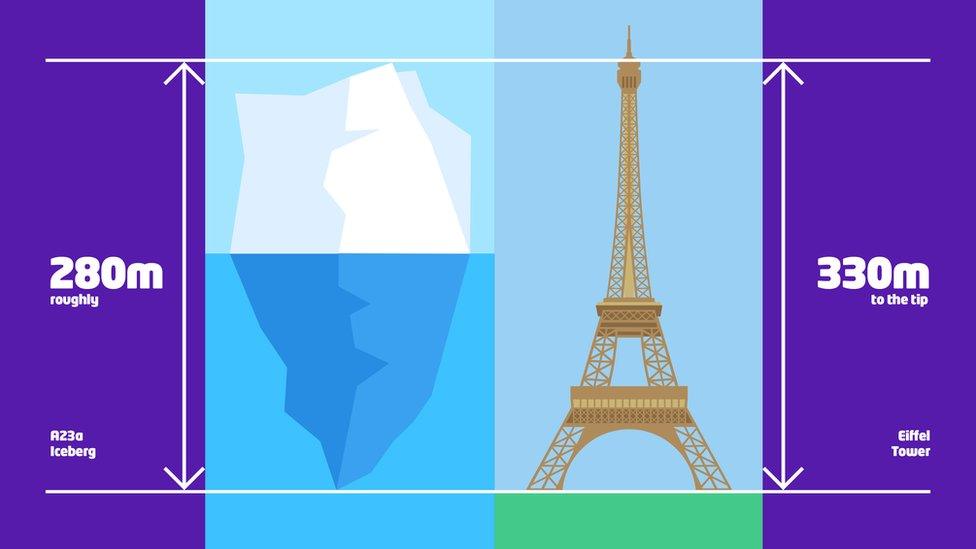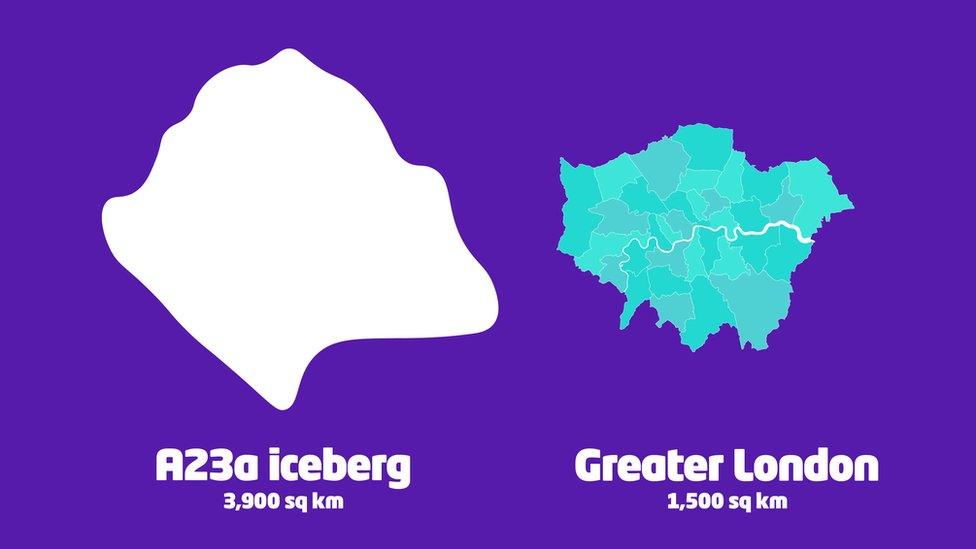A23a: World's biggest iceberg in numbers
- Published
- comments

Iceberg A23a started drifting at speed after spending decades as a static ice island
Satellites studying A23a, the world's biggest iceberg, have taken pictures that give scientists a good indication of its size and how heavy it is.
It split from the Antarctic coastline more than 30 years ago, however, until recently it had been stuck to the ocean floor.
Scientists are very interested in the iceberg because its journey could have big impacts, such as providing nutrients to the areas of water it floats through.
But what did the satellite images find? Here's A23a by numbers.
280

The iceberg is roughly 280m (920ft) deep in places - that's about 50m less than the famous Eiffel Tower in Paris.
That's just the average thickness of the ice, though - one part is about 350m thick, and it's this bit that kept it attached to the continent of Antarctica for so long.
3,900

A23a is 3,900 square kilometres (1,500 square miles) wide. To put that in perspective, that makes it only 100 square kilometres bigger than the county of Suffolk in England.
It's also almost twice the size of Greater London.
A trillion

Knowing the iceberg's thickness and area means scientists can work out its mass.
A23a is calculated to be just less than a trillion tonnes.
The Great wall of China has a mass of 580 million tonnes. That makes A23a's mass the same as around 1720 Great Walls.
1986

As the world's weather got warmer, A23a slowly started to break away from Antarctica, until in 1986 it completely broke off and started moving through the ocean.
1986 was also the year the fastest man alive, Usain Bolt, was born, and the year the Oprah Winfrey show first aired.
